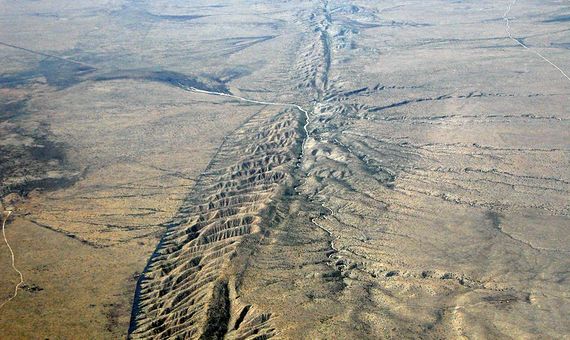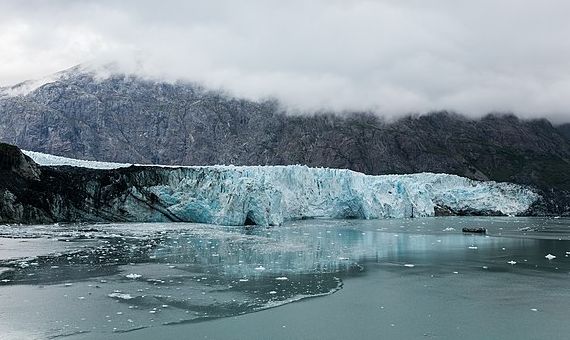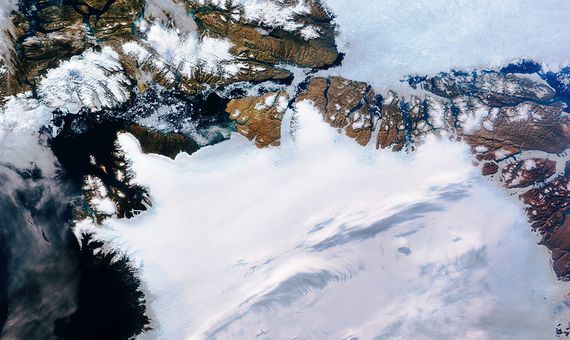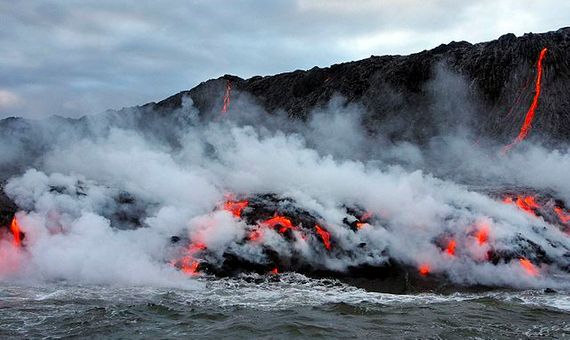The unfolding climate emergency has inured us to hearing dire predictions about how our world is becoming a more unstable and inhospitable place: melting ice, rising sea levels, extreme weather events, floods and droughts all result not only in environmental destruction, but also in risks to health and food security. As if that were not enough, there is growing scientific evidence that climate change may also play a role in geological phenomena such as earthquakes, tsunamis and volcanic eruptions. And while there is still debate about what magnitudes these secondary effects of global warming may reach, there no longer seems to be any doubt that the risk is real.

When in 2012 geophysicist and climate risk expert Bill McGuire of University College London published his book Waking the Giant: How a Changing Climate Triggers Earthquakes, Tsunamis, and Volcanoes (Oxford University Press), the media echoed what was presented as a new climate change wake-up call. But there also was no shortage of sceptical reaction: how could atmospheric elements such as water or air influence tectonic phenomena that depend on solid rock?
McGuire warned that the sleeping giant beneath our feet, the Earth, sometimes needs only a little nudge to awaken in the form of earthquakes, volcanic eruptions or landslides, and that the tiny extra disturbance can be produced by climatic alterations. “Many of these processes certainly do operate on small scales,” McGuire notes to OpenMind. However, he adds, “as a seismologist colleague of mine is fond of saying, if a fault is primed and ready to rupture, all that is needed is the pressure of a handshake to set if off. If systems are critically poised, then the environmental changes associated with rapid and accelerating climate breakdown could easily do the job.”
The impact of glaciers on the Earth’s crust
Specifically, among the climatic factors that have been implicated in these processes are primarily changes in terrestrial ice cover, rainfall and even atmospheric pressure. The first of these is the one that has been studied in most detail; glaciers and permanent ice sheets in the planet’s polar regions exert enormous pressure on the bedrock, causing it to warp downward. As the ice melts and that weight is released from the Earth’s crust, the land responds with a rebound, like a slow, giant version of a trampoline. This rebound can have consequences for geologic faults and magma deposits.
Numerous researchers have found evidence of how this phenomenon affects volcanism and seismicity. At the University of Leeds (UK), volcanologist Claire Cooper and her collaborators study how over the past 12,500 years glaciations and glacial retreat have effected volcanic eruption cycles in Iceland. “When those glaciers retreat, the decompression causes uplift of the crust and makes it easier for the magma to reach the surface, possibly resulting in an eruption,” the researcher explains to OpenMind, adding that a similar phenomenon is being studied on the Kamchatka Peninsula (Russia) and in the volcanic zone of the southern Andes in Chile.

Something similar applies to earth tremors. “It is known that glacial movements/mass changes (which do not need to be caused by climate change) can cause microseismicity in the crust,” geophysicist Andrea Hampel of Leibniz University Hannover (Germany) tells OpenMind. Work by Hampel and other researchers has shown how this phenomenon may have affected various regions; Alaska is a particularly well-studied case, being a tectonically active region.
“Earthquakes induced by ice melting have occurred several times in the past,” geophysicist Rebekka Steffen of the Swedish Mapping, Cadastral and Land Registration Authority, whose research covers seismic activity due to changes in ice, tells OpenMind. The scientist specifies that there is evidence of this phenomenon over the last 20,000 years in many areas of northern and central Europe, from Scandinavia to Russia, as well as in North America.
In Greenland in particular, Steffen adds, there are signs of an earthquake associated with ice loss that affected the southern coast about 10,000 years ago. “Earthquakes are closely related to the melting of ice sheets, and in this case it doesn’t matter if the melting occurs due to human-induced climate change or not.” McGuire comments on another case that occurred when Scandinavia lost its three-kilometre layer of ice after the last ice age: “Earthquakes as large as magnitude 8 or more triggered the Storegga Slide, one of the biggest submarine landslides on the planet, which resulted in a huge tsunami. Run-up heights were in excess of 20m in the Shetland Isles and 6m down the east coast of the UK.”
Climate change could accelerate the problem
These effects linked to the ebbs and flows of ice in the past reveal themselves over the long term; Cooper speaks of a delay of at least two to four centuries between the retreat of the glaciers and the volcanic response, while Hampel notes that in Scandinavia, a tectonically stable region, earthquakes linked to the retreat of the ice after the last glaciation appeared between a few centuries and a millennium later.
But more complicated than describing these phenomena in the past is predicting them in the future. According to Hampel, “the hard thing to tell is when the threshold for a seismic response of the crust is reached, because this depends primarily on the stress state of the crust, the presence of potentially pre-existing zones of mechanical weakness in the crust (e.g. faults), the volume of the ice that melted and the velocity of the ice melting.” However, if a certain combination of factors is needed to trigger the perfect storm, it is certain that current climate change is favouring them, with the accelerated melting of large ice masses.

Therefore, the experts consulted agree that the areas at greatest risk are those that are losing ice at an accelerated rate, such as the mountainous regions of Alaska, the Himalayas and the Alps. “In southern Alaska, some areas have lost a vertical kilometre of ice, which is already being reflected in increased levels of seismicity,” says McGuire.
But above all, danger may lurk at the two ice caps, for although these are not densely populated areas, the risk of earthquake is compounded by that of tsunami: “One problem with Greenland and Antarctica is that their ice is surrounded by water, so earthquakes can occur in the adjoining areas under water. These earthquakes could trigger tsunamis,” says Steffen. The geophysicist warns that a tsunami generated in Greenland could reach Europe and North America, while one in Antarctica would threaten the coasts of Australia, South Africa and South America. “But when exactly these earthquakes might happen in the future, this is not clear and more investigations are needed,” she suggests.
Precipitation can alter geological phenomena
Ice retreat is the main risk that worries scientists, but it is not the only one: some research has also revealed how rainfall cycles can affect geological phenomena. In Hawaii, a study proposed that water pressure inside rocks after a season of heavy rainfall caused a behavioural change in the recent prolonged eruption of the Kilauea volcano. In the Himalayas, a relationship has been found between annual monsoon rainfall cycles and the occurrence of microseisms (faint earth tremors). And if climate change alters precipitation patterns, this could also have consequences for the frequency or intensity of these geological phenomena.
More unusually, it may seem that even abrupt changes in atmospheric pressure may also influence seismic risk. In Taiwan, it has been shown that the low pressure associated with typhoons can cause tiny movements on faults that, if in a critical state, could trigger an earthquake; this is the handshake idea cited by McGuire, or the proverbial straw that breaks the camel’s back. In the case of Taiwan, the earthquakes detected are of the slow type: they release their energy over hours, days or months, so they are much less violent than the typically destructive ones, which do so in seconds.

In short, and although all this paints a picture that generally refers to microseisms, slow earthquakes or effects that will arrive far in the future, the truth is that experts are cautious when assessing what could be the scope of these phenomena in the worst case, and in the context of accelerated and massive climate change that has got completely out of hand. Therefore, McGuire’s conclusion should serve as an ever-present warning: “There is plenty of evidence that tiny environmental changes can trigger major geological events that can be deadly and destructive.”
Comments on this publication